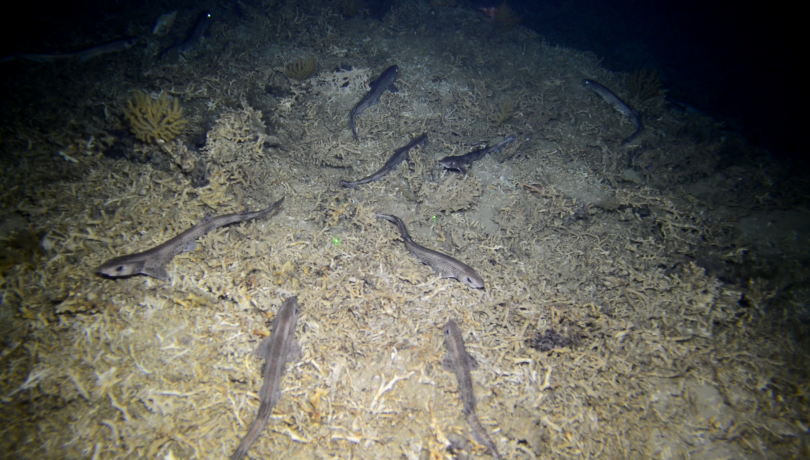A study led by ICM-CSIC and IEO-CSIC analyzes biological, environmental, and human factors that influence the bioaccumulation of this toxic metal in the small-spotted catshark.

New research led by the Institut de Ciències del Mar (ICM-CSIC) and the Spanish Institute of Oceanography (IEO-CSIC) has detected elevated mercury concentrations in the muscle of the small-spotted catshark (Scyliorhinus canicula), a small deep-water shark that is very common in the Mediterranean. The study, recently published in the journal Marine Pollution Bulletin, identifies the main biological, environmental, and anthropogenic factors that determine the presence of this pollutant in this predator, considered a sentinel species for marine pollution.
The study analyzed the role of biological variables such as the size of individuals, and other anthropogenic variables such as proximity to large urban centers or the impact of fishing on total mercury concentrations. The results showed higher concentrations of this pollutant in larger individuals and those found in the northern area of the sampling region, which coincides with the Catalan coast.
The results of mercury presence are similar to other studies conducted on this shark, which show that values in the Mediterranean basin are higher than in the Atlantic. In addition, the potential health risk for humans was assessed based on different levels of consumption, showing that in scenarios of moderate to high consumption, the safety thresholds established by health authorities are exceeded.
“This study shows that regular consumption of small-spotted catshark could pose health risks, especially in certain regions where its consumption is more common. But more specific consumption values are needed to obtain more accurate results,” says Elena Lloret, ICM-CSIC researcher and first author of the study.
For his part, Joan Giménez, researcher at the Oceanographic Center of Málaga of the IEO-CSIC, highlights that “the study not only contributes to understanding the spatial and ecological patterns of contaminant accumulation in marine predators, but also provides evidence of how this shark species can serve as a bioindicator species for the presence of pollutants in deep-sea marine ecosystems.”
The study highlights the urgent need to incorporate species-specific consumption values into food risk assessments, as well as to continue investigating biomagnification processes in marine trophic chains, particularly in the context of global change and increasing anthropogenic pressure on marine ecosystems.
“This study is part of the joint effort by ICM-CSIC and IEO-CSIC to improve knowledge about marine pollution and its impact on both wildlife and human health, and reinforces the role of marine science and inter-institutional collaboration in designing more effective management and conservation strategies,” emphasizes Marta Coll, ICM-CSIC researcher and co-author of the study.
This work was carried out using data collected during the MEDITS campaign (Mediterranean International Bottom Trawl Survey), an international fisheries assessment program coordinated by the European Union. In Spain, participation in MEDITS is co-financed by the European Union through the European Maritime, Fisheries and Aquaculture Fund (EMFAF) under the National Program for the collection, management and use of fisheries sector data and support for scientific advice about the Common Fisheries Policy.